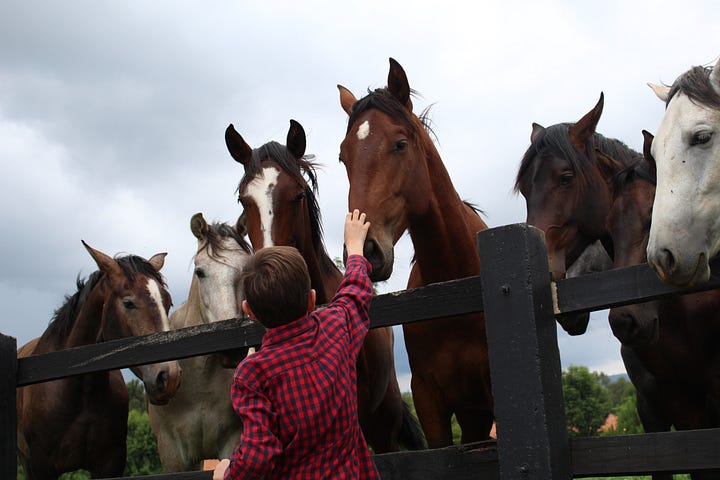A horse’s walk is a basic four beat gait. The walk is the slowest gait. A trot is the next speed up from walk, it is a two beat gait where the horses front and back legs move in sync. The trot is the equine equivalent to jogging, and is in fact referred to as a jog in some disciplines. The canter, also called lope, is a three beat gait that is faster than trot but not a full gallop. A gallop, which is what race horses are doing on the race track, is the fastest gait. It is a four beat gait. This is the gait that should be referred to as running.
Uninitiated riders often do not understand the differences between a horse’s gaits, and therefore do not necessarily understand what a horse is doing when he is running. It is not uncommon to hear new riders come back from a trail ride and tell their friends that the horses ran, when in fact, the horses never went any faster than a trot.
The average horse walks at speeds of between 3 and 4 miles per hour, trot at between 8 and 10 miles per hour and canter at between 10 to 17 miles per hour.
How Fast Can the Average Horse Run?
As with people, no two horses are exactly the same. Horses come in all shapes, sizes and breeds. Some individuals are naturally more athletic than others, and athletic training, age, health, fitness level and conditioning can be used to increase and enhance natural talent. All of these factors come into play when determining how fast a horse can run. There is no set standard for how fast a specific individual horse can run, and there are even variations between individuals of the same breed and bloodlines.
The Ultimate Horse Site reports that the average horse can gallop at approximately 30 miles per an hour, give or take a couple of miles for the individual horse. Older horses, or those that are not well conditioned or have health problems, will probably gallop significantly slower than 30 miles per hour.
How Fast Can a Race Horse Run?
Certain breeds of horses are notably faster than others. That is because these horses have been bred for their speed, agility and endurance. Primary racing breeds commonly seen in the United States include American Quarter Horse and the Thoroughbred. Both of these horses are commonly used for racing, though Quarter Horses excel and compete at shorter racing distances than Thoroughbreds. Thoroughbred racers have to be able to maintain their speeds for longer distances in order to be successful on the racing circuit. How fast can a horse run? Breeding and bloodlines within the breed will also affect this.
American Quarter Horses, who travel short distances at high speeds, can gallop at up to 50 miles per hour. Thoroughbreds are estimated to be able to gallop at approximately 40 to 45 miles per an hour.
In 1972, Thoroughbred racing legend Secretariat set a speed record that has never been officially broken. He traveled a mile and a half in just under two and a half minutes.
YOUTUBE:
how to make money as a teenager in 2020
FAQ:
1.How to make money online.
Ans: Click Here to make money
2.How to make money offline.
Ans:Doing maintenance
